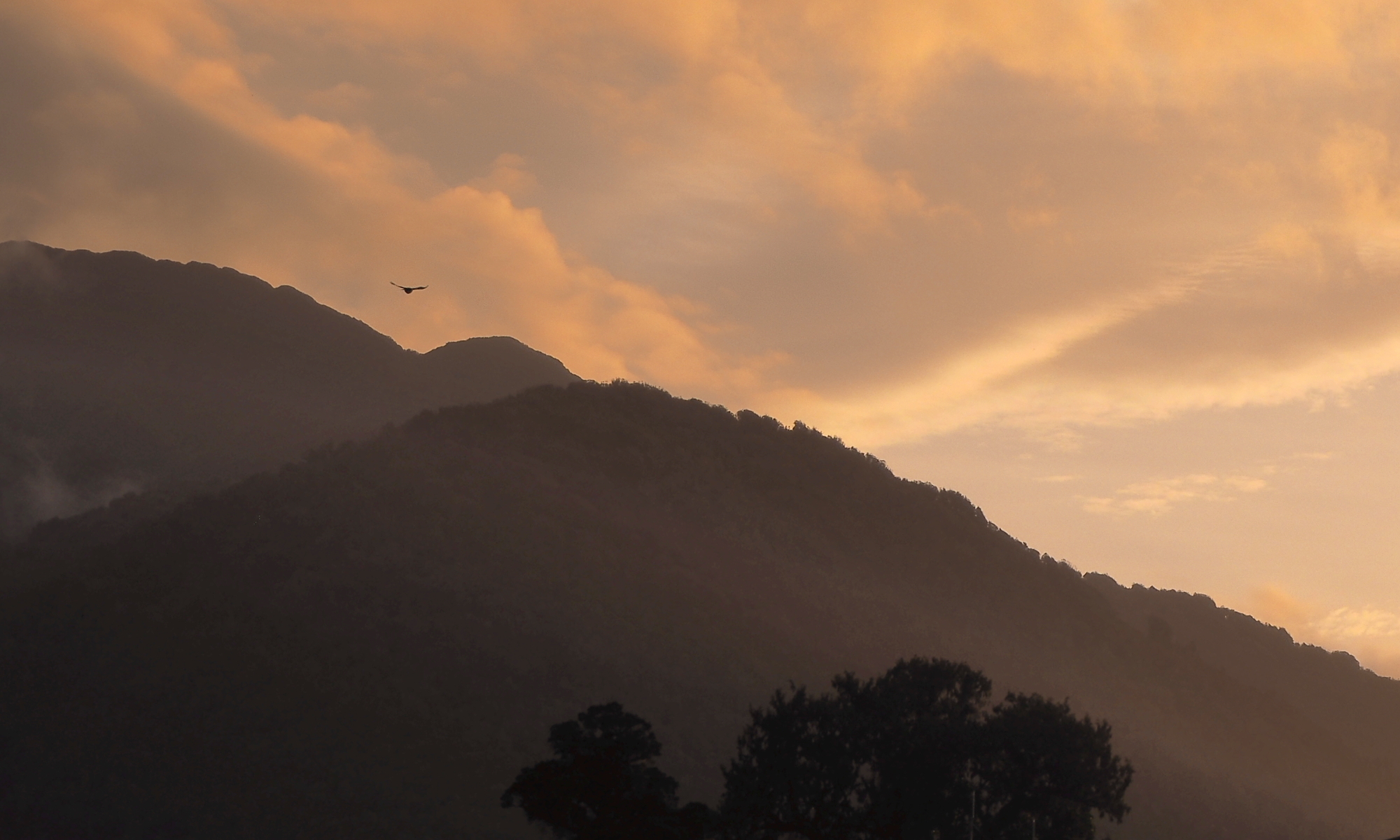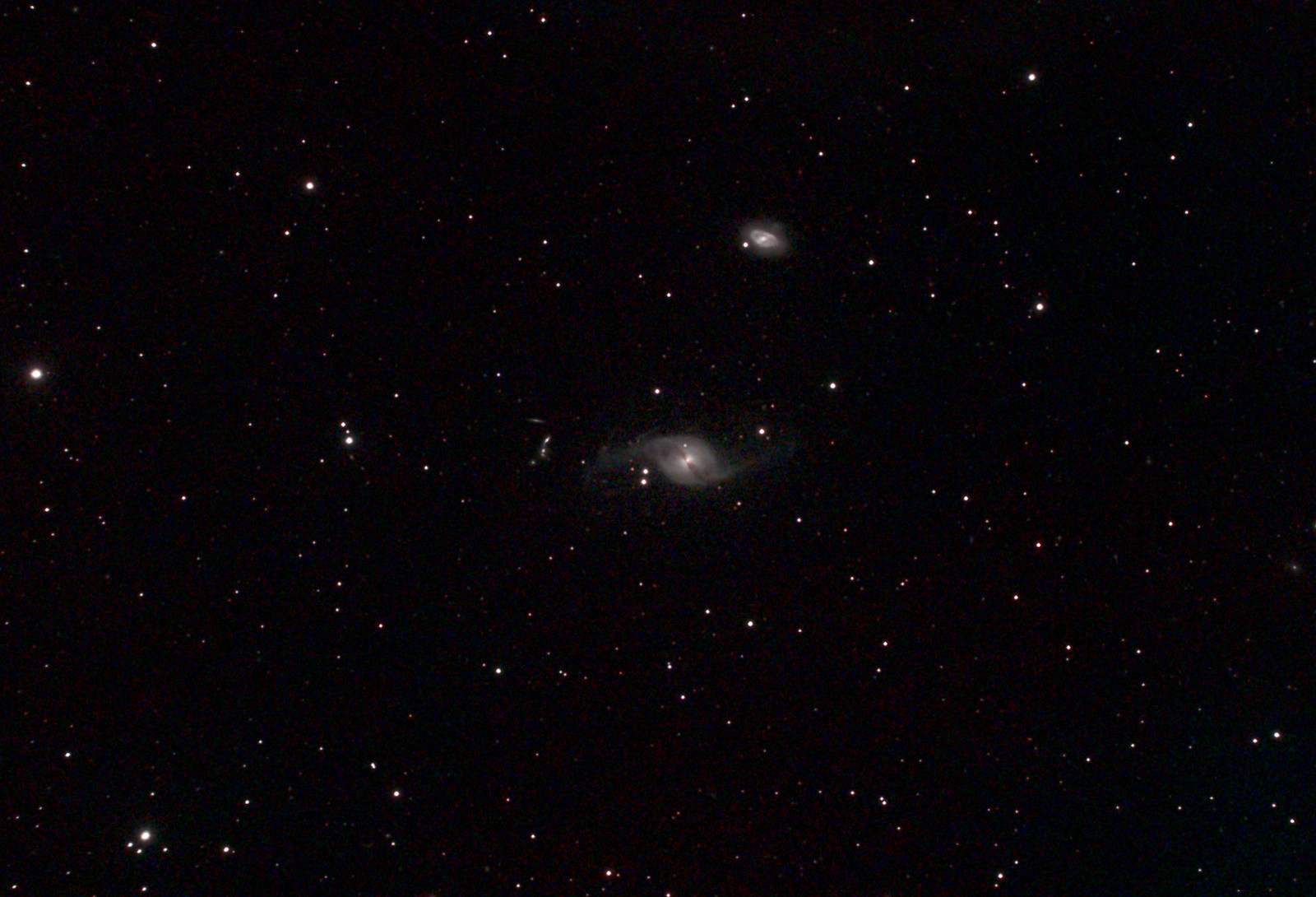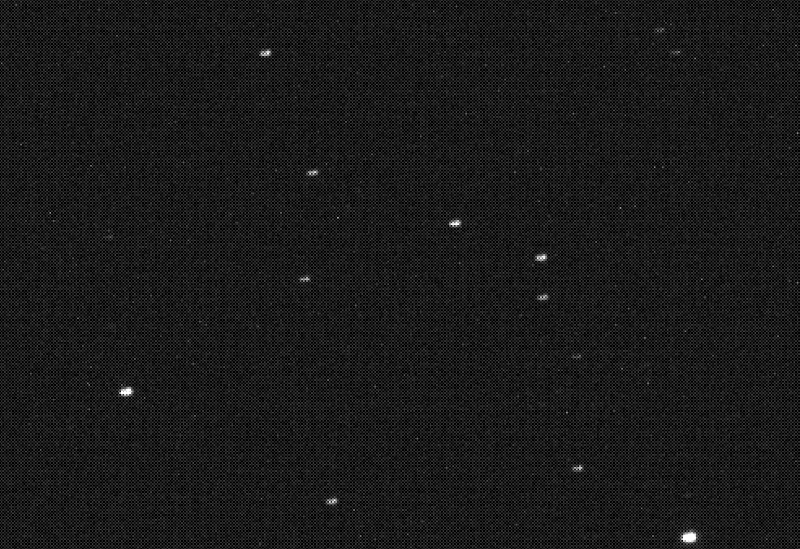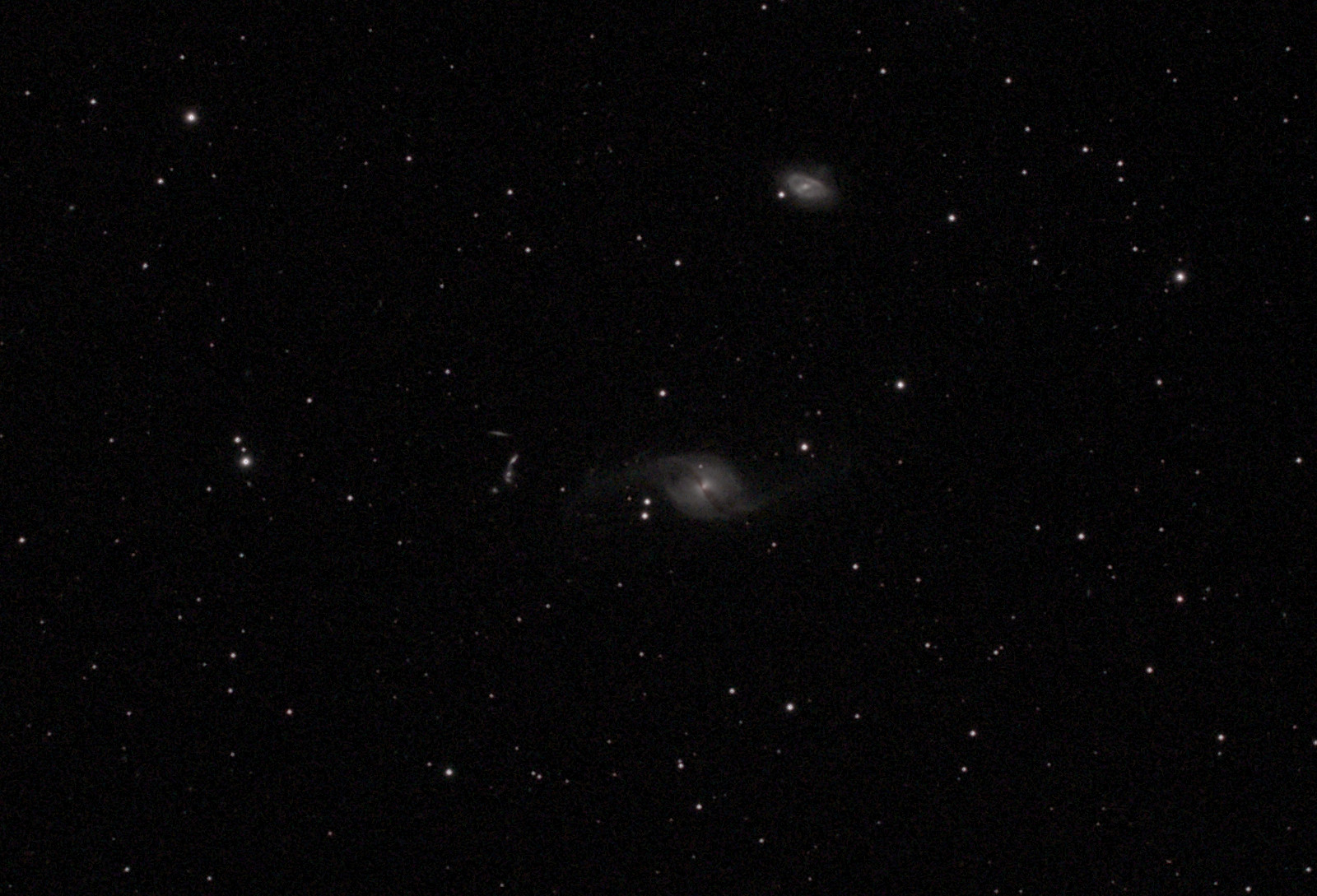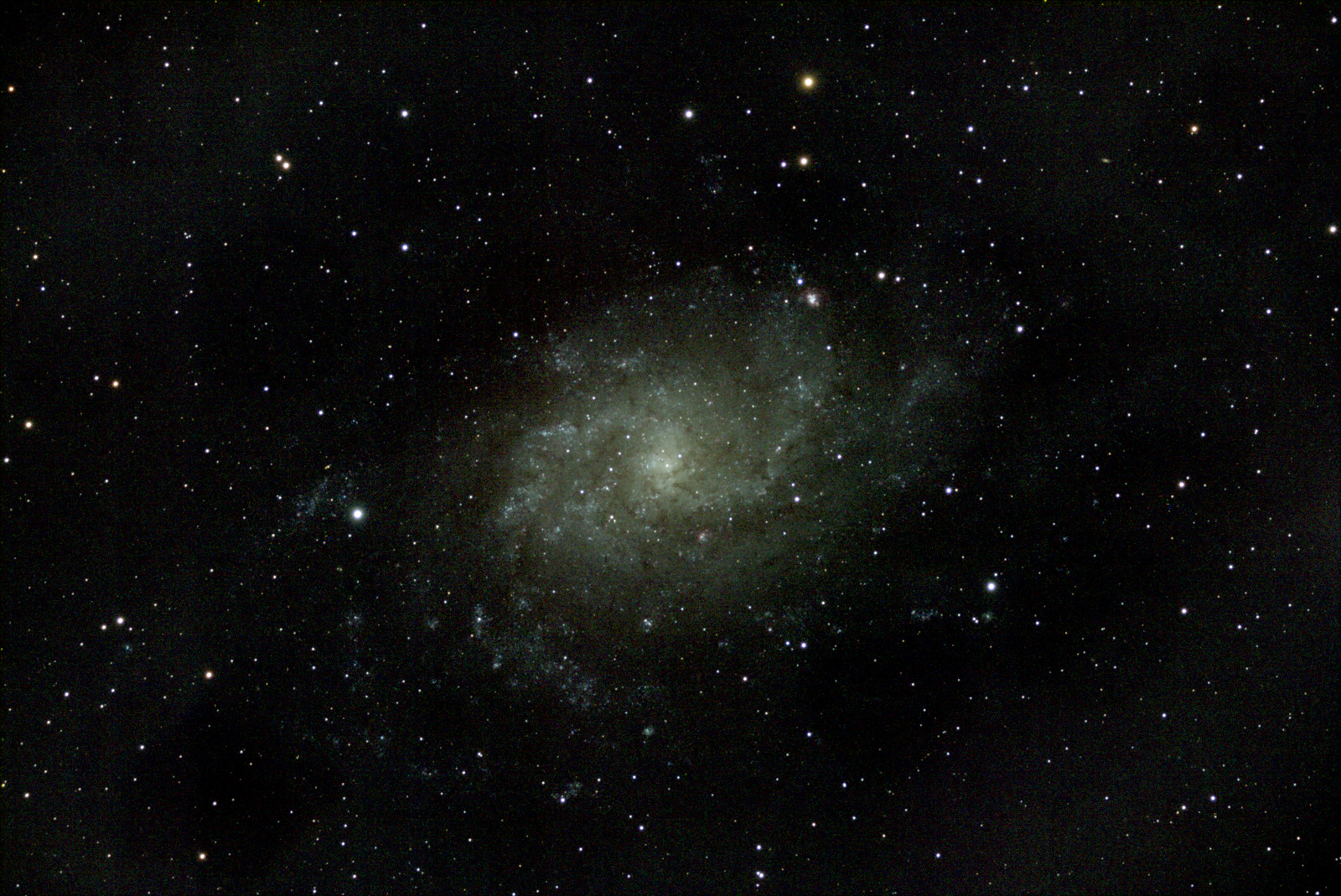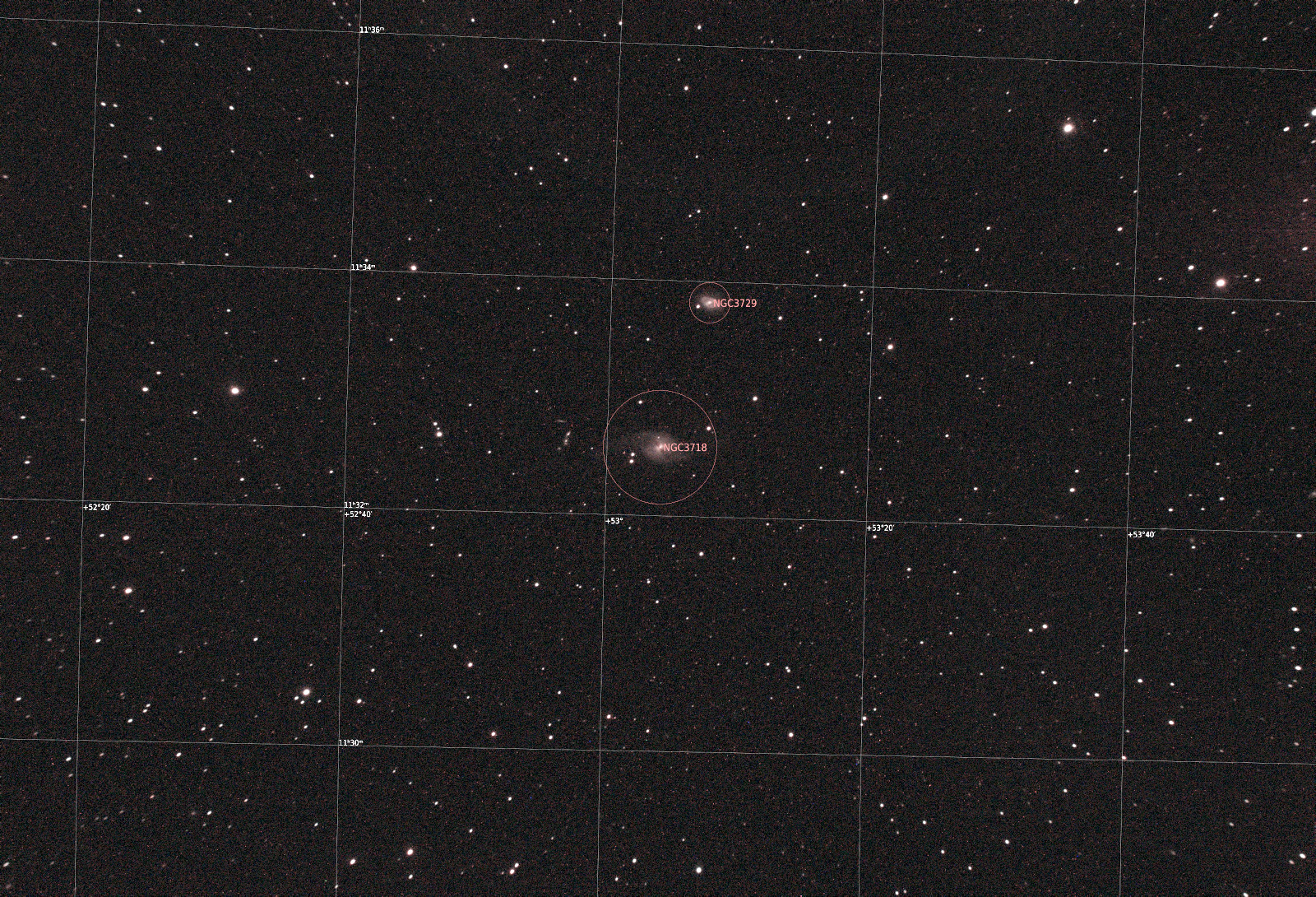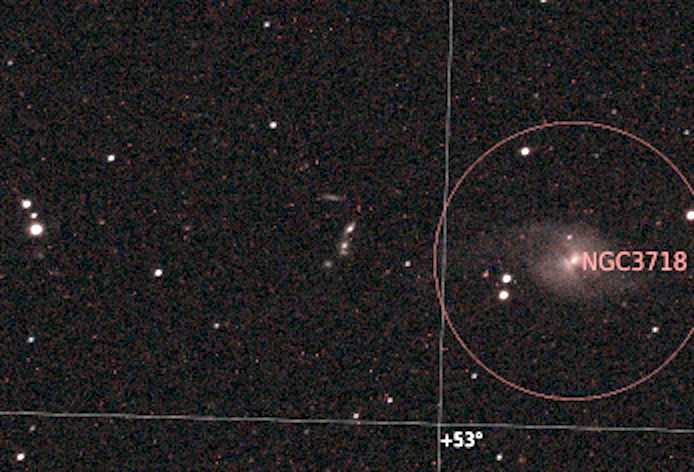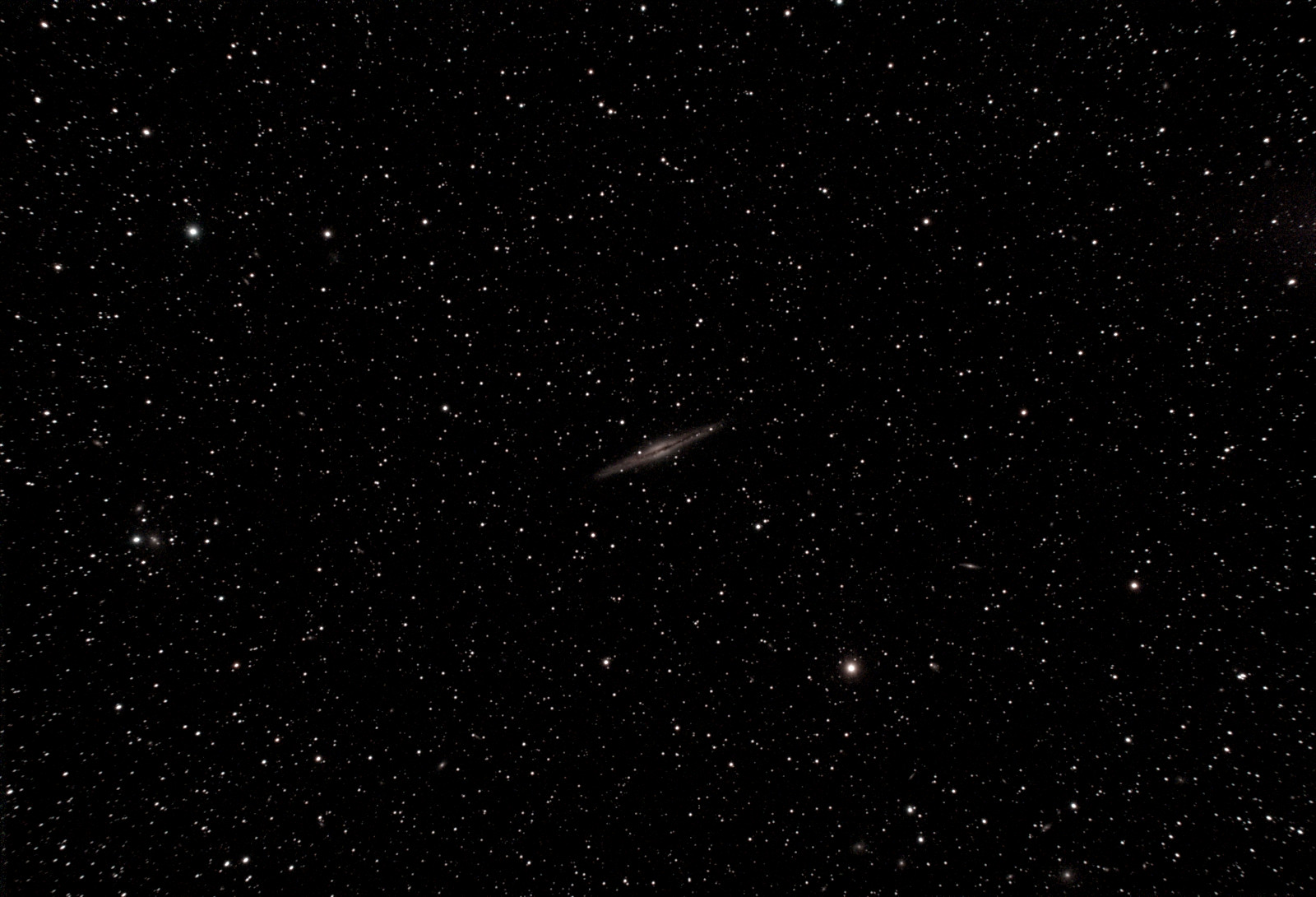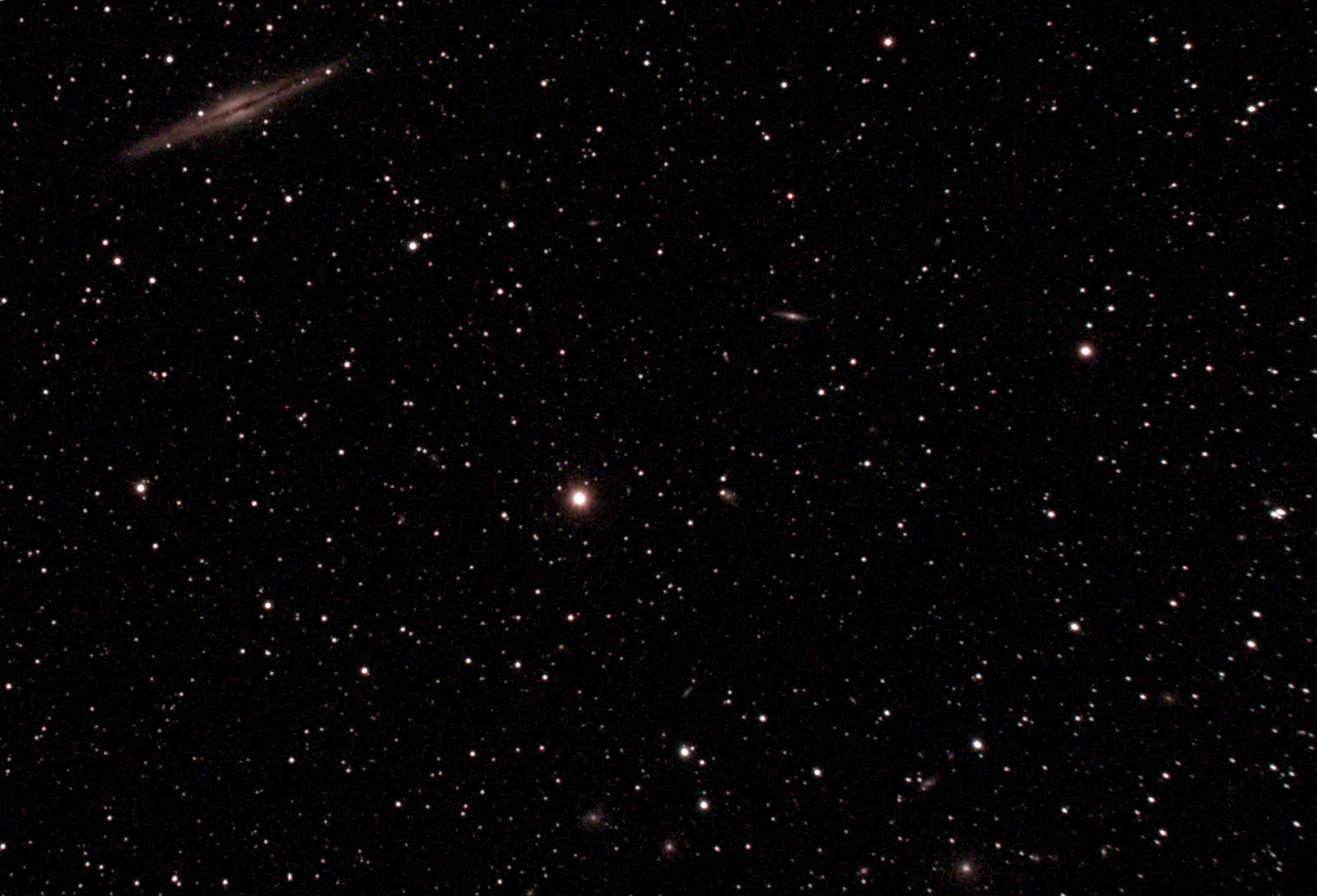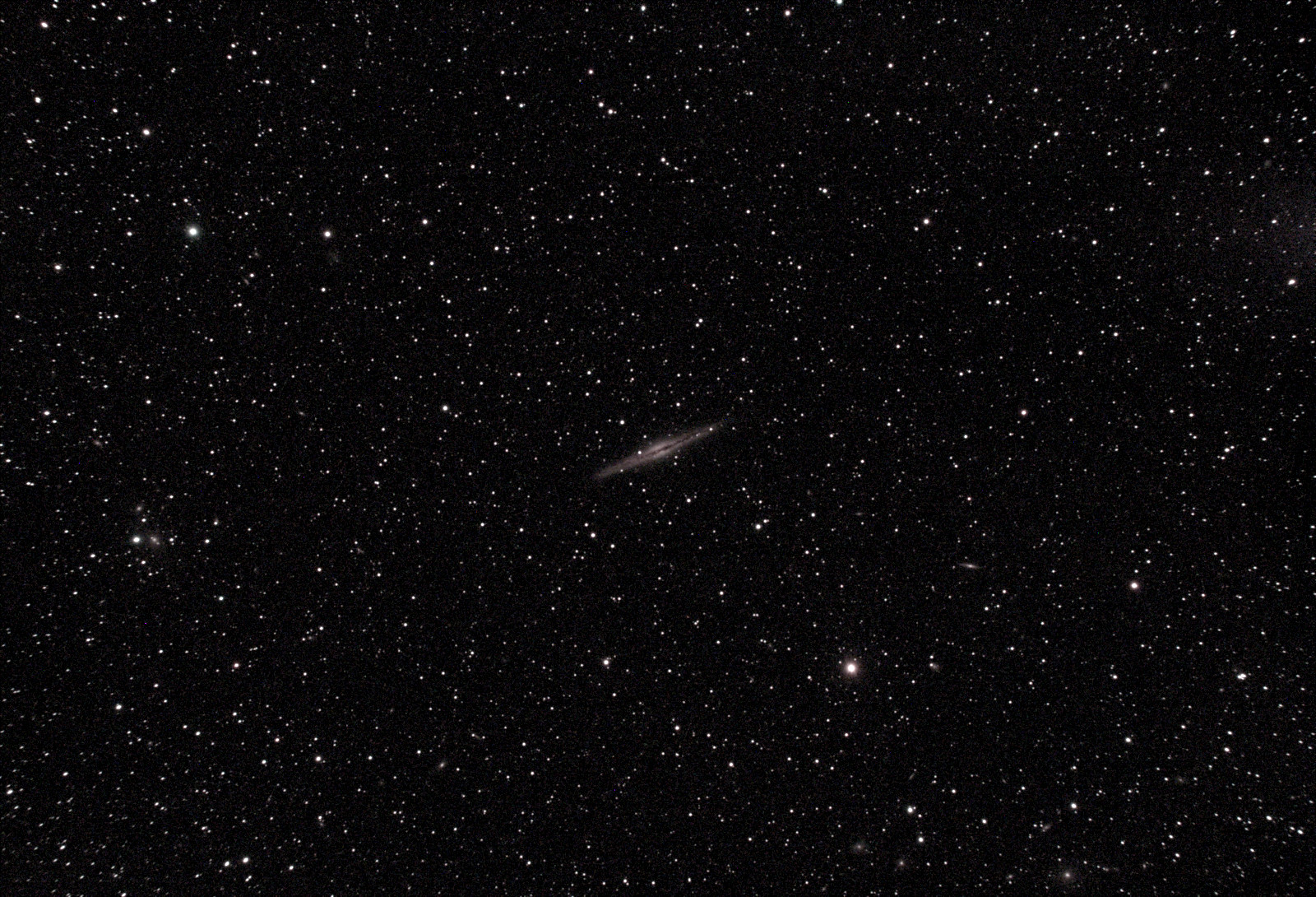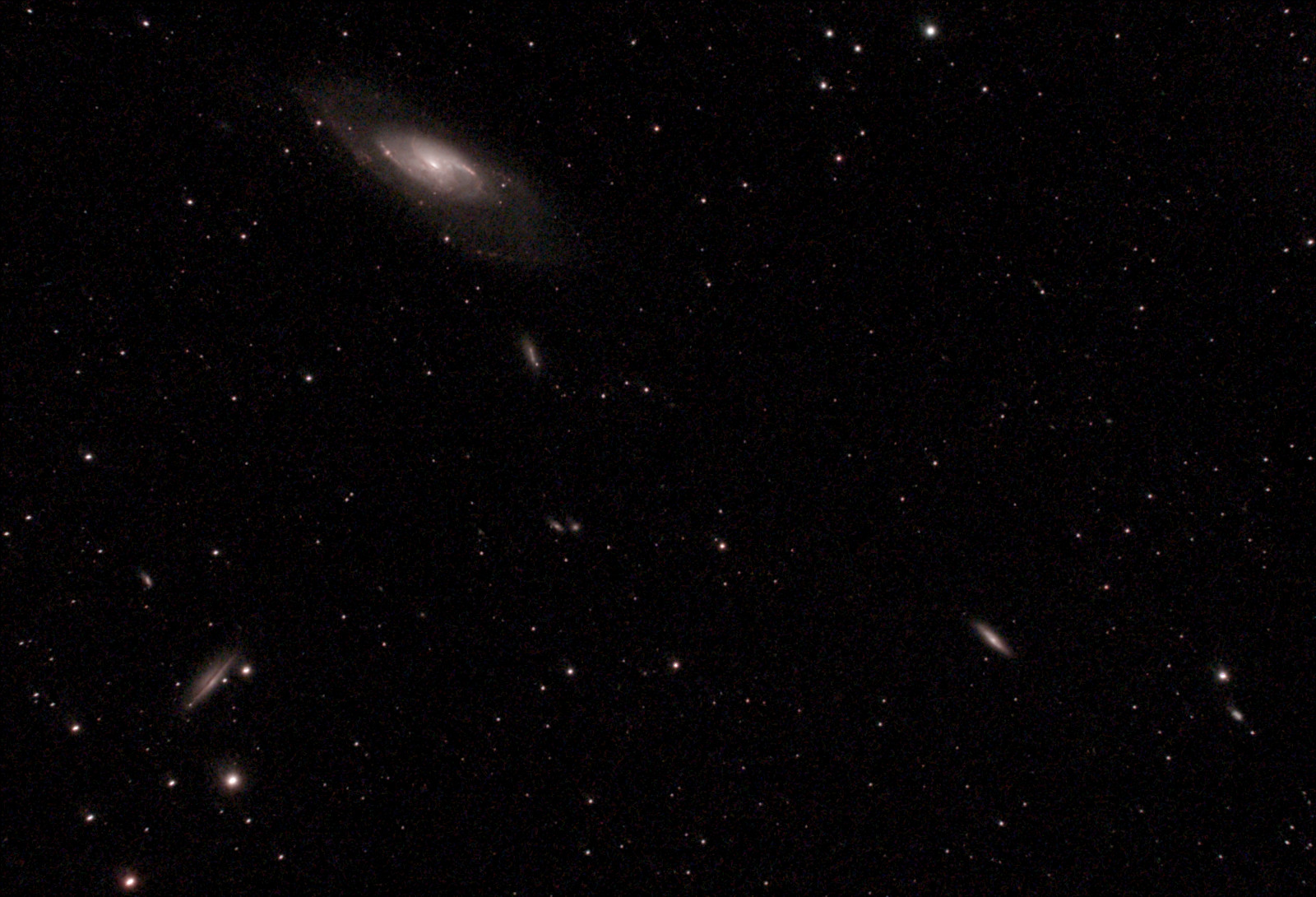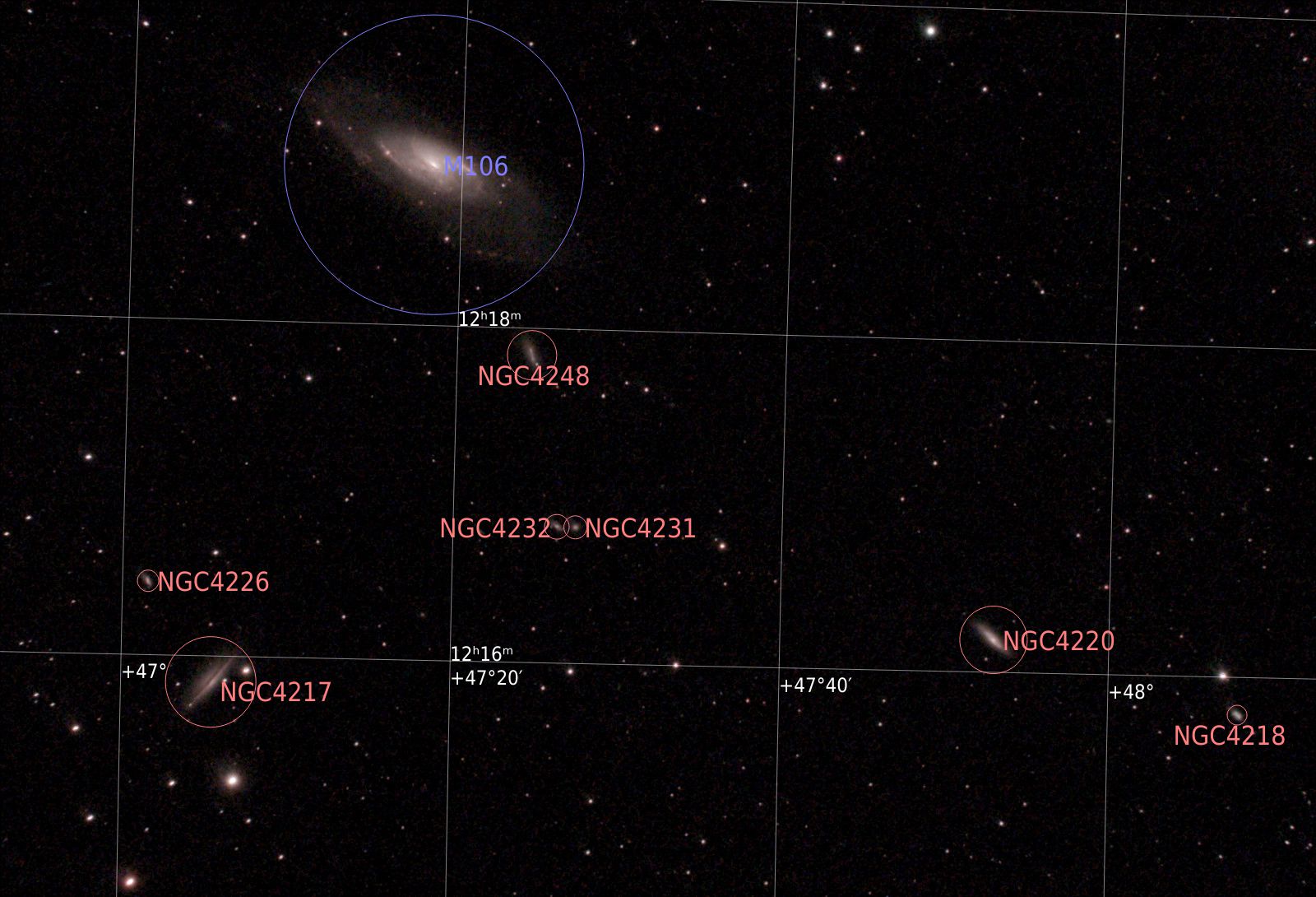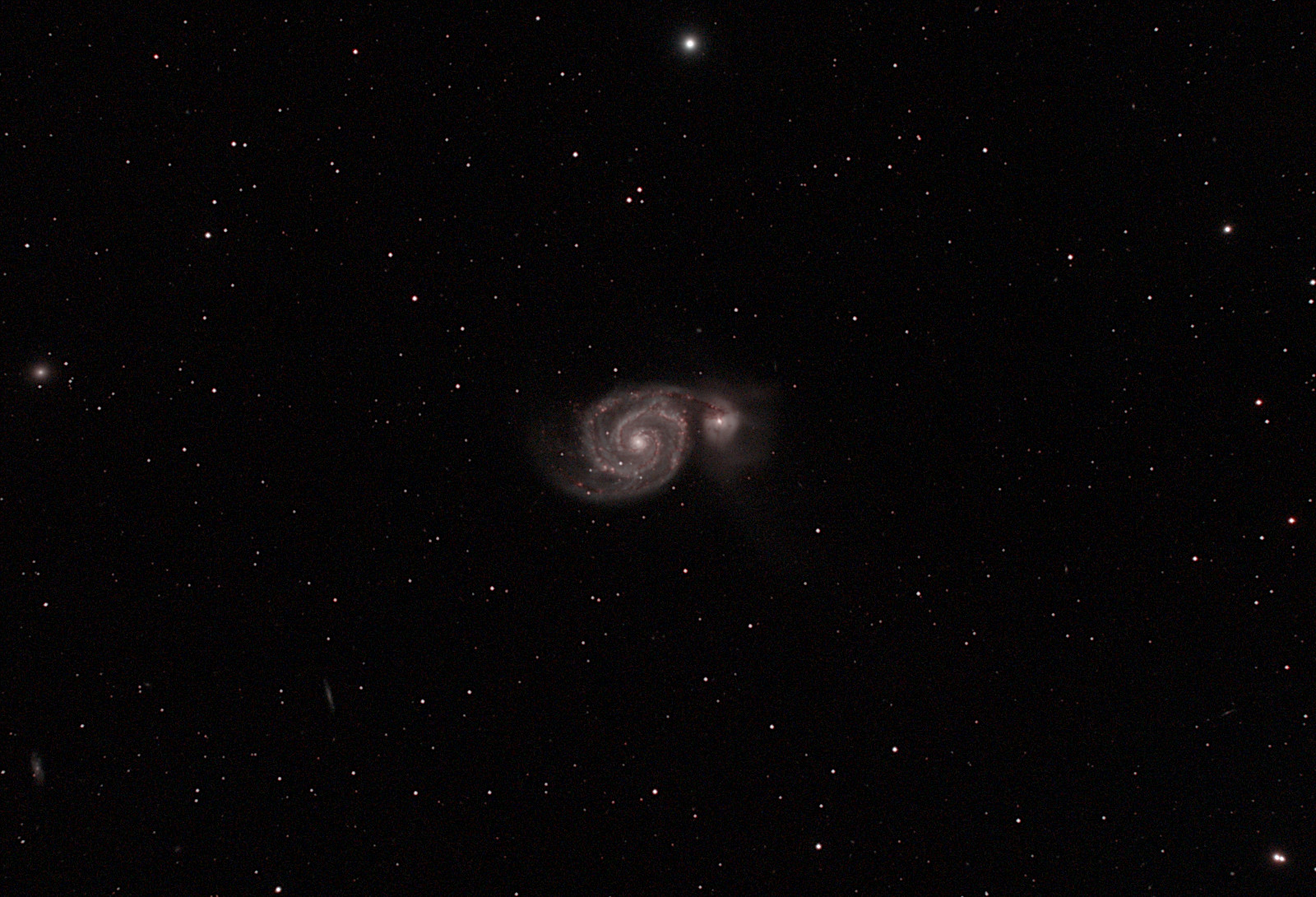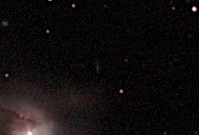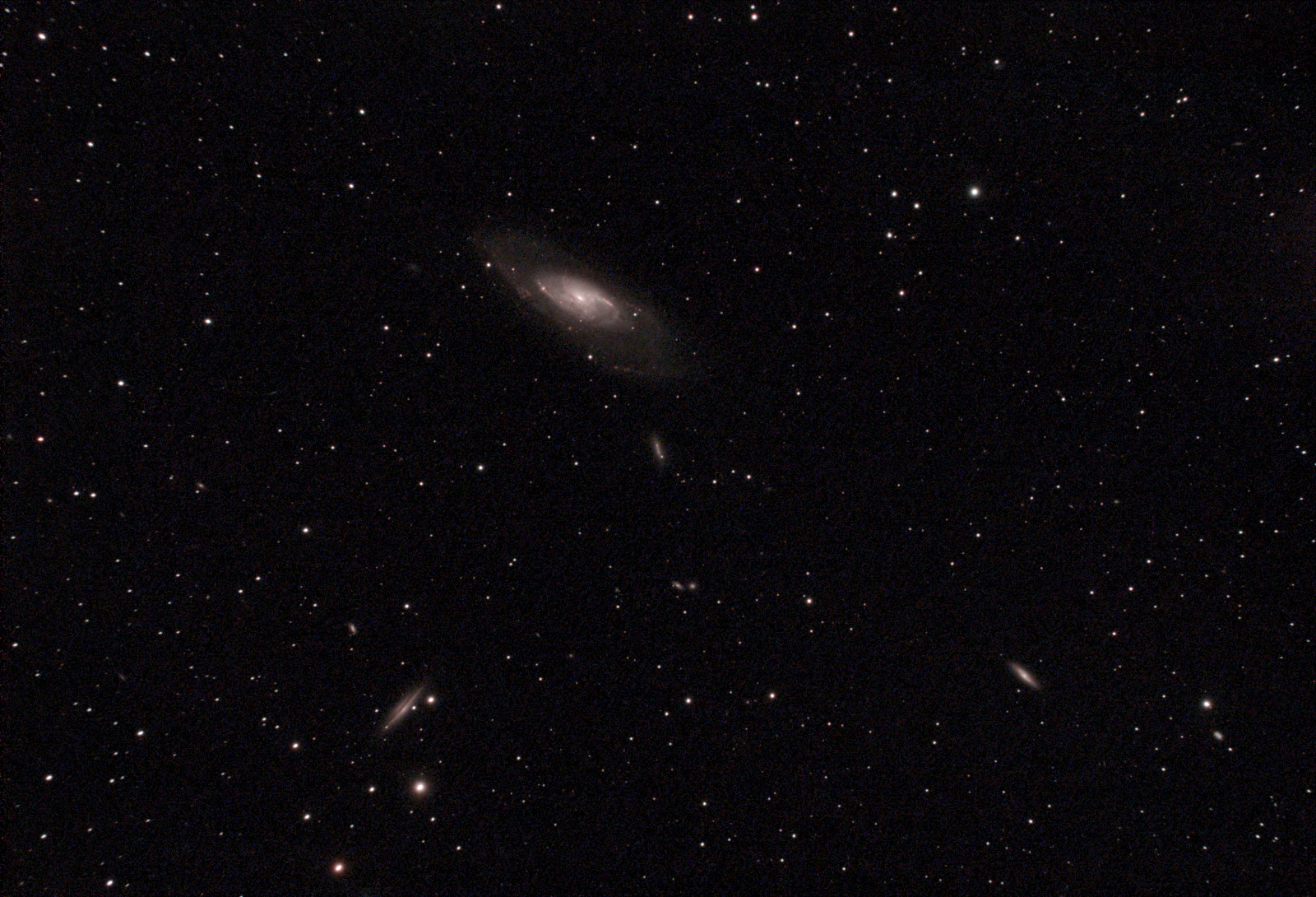
I managed to spend more time photographing NGC4248 and friends. NGC4248 is the tiny galaxy dead center; M106 is the larger galaxy above and left. I posted the same view a couple of weeks ago — that post integrates a fewer number of exposures. There is also an annotated version in that post that identifies several galaxies in the field.
Increasing the number of exposures will improve the clarity of the image, but there are limits. The rule is that clarity improves as the square root of the number of sub-exposures — 16 five-minute exposures combined should improve the clarity by about a factor of four over a single five-minute exposure. The above picture had about 40 five-minute sub-exposures; 80 exposures would show some improvement, though maybe not easily noticeable.
